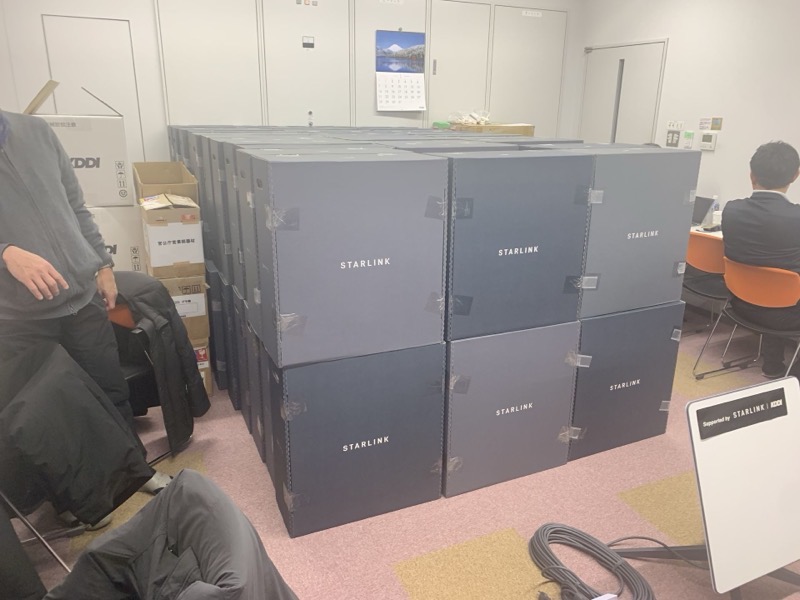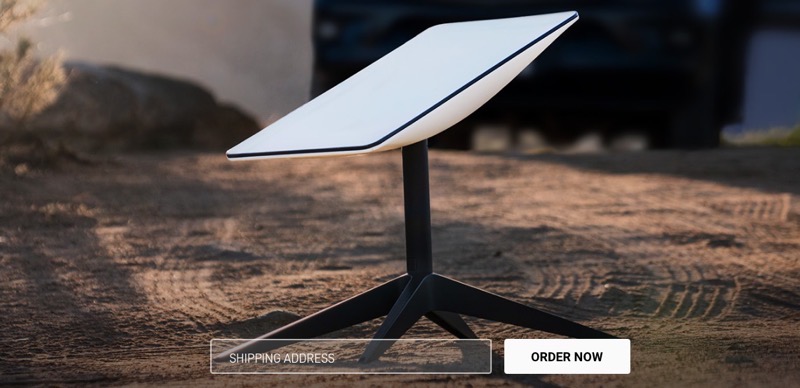
Japan’s KDDI Using Starlink for Earthquake Recovery Efforts

In the wake of the Reiwa 6 Noto Peninsula earthquake on January 1 in Japan, which recorded a maximum intensity of 7.0 on the Richter scale , telecom KDDI has been at the forefront of recovery efforts.
The earthquake led to prolonged power outages and significant disruptions in transportation and logistics. KDDI’s response includes the restoration of base stations and the strategic deployment of SpaceX’s Starlink satellite communication to aid Japan’s Self-Defense Forces, electric utilities, and local governments.
Shogo Takagi, Deputy General Manager of the Business Design Division at KDDI’s Solution Business Headquarters, and Satoshi Tsuruta, Manager of the LX Platform Promotion Department, provided insights in an interview conducted by Sei Sekiguchi, editor-in-chief.
Takagi, speaking from KDDI’s network center in Kanazawa, said to K-Tai-Watch (via @SERobinsonJr), “We rapidly transformed this center into a disaster response hub. Our efforts extend beyond base station restoration; we are actively delivering and supporting communication equipment to various corporate clients affected by the disaster.”
“Since the earthquake’s onset, we’ve been coordinating nationwide efforts. Our focus has been on establishing a base, which we did by January 2, bringing together teams from business design, solution engineering, logistics, and operation maintenance,” added Takagi.
The situation on the ground is challenging he noted. Takagi explained, “In areas without electricity, the need for satellite mobile phones, including Iridium versions, was immediate. We supported local surveys in places with damaged utility infrastructure. Following this, we deployed Starlink for data communication needs.”
KDDI’s approach to disaster response is methodical and adaptive. “Our response evolves step-by-step, starting with voice communication needs and progressing to more complex requirements,” Takagi stated. He also mentioned that this was the first large-scale disaster where KDDI utilized Starlink.
“Compared to previous satellite communication devices, Starlink’s antennas are significantly smaller and lighter. The demand has been increasing, with requests growing from an initial 5 units to 15 and more.”
As of the interview, approximately 150 Starlink units had been transported to Kanazawa, with 60 already in use. Over 100 Iridium satellite phones were also dispatched, with more than 50 in operation. “Our customers report that using Starlink feels almost indistinguishable from fiber optic connections, even for video transmission,” Takagi added. Now that’s some high praise for Starlink.
Despite the hectic nature of the situation, Takagi is optimistic about the learning outcomes. “The customer needs have potentially increased three to fourfold. We are striving to meet these demands promptly. The smoothness of our delivery is a testament to our past disaster response training.”
Looking ahead, Takagi sees these experiences as valuable lessons for future disaster response strategies. “We are learning and adapting. Our logistics centers in Tokyo and Osaka might consider distributing equipment more widely to ensure quicker deployment in future scenarios.”
SpaceX last week launched its first Starlink Direct to Cell satellites into low Earth orbit. These will be used to provide cellphone coverage around the globe. KDDI is one of Starlink’s first partners for the service. It’s no surprise they have the support of SpaceX to help with earthquake recovery efforts.
In conclusion, Takagi emphasized KDDI’s commitment to evolving disaster response strategies. “While we never wish for disasters, our experience here provides valuable insights for future preparedness. We will continue to stand by our customers and respond effectively.”

